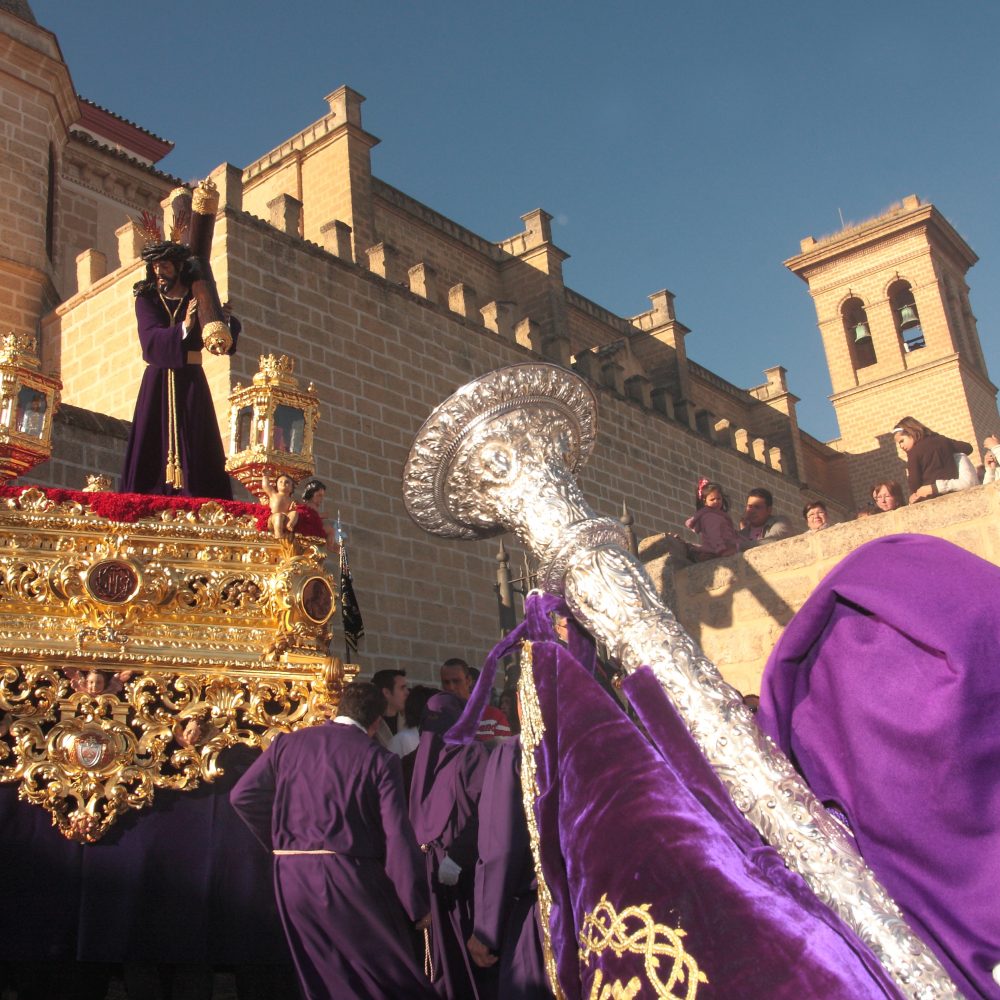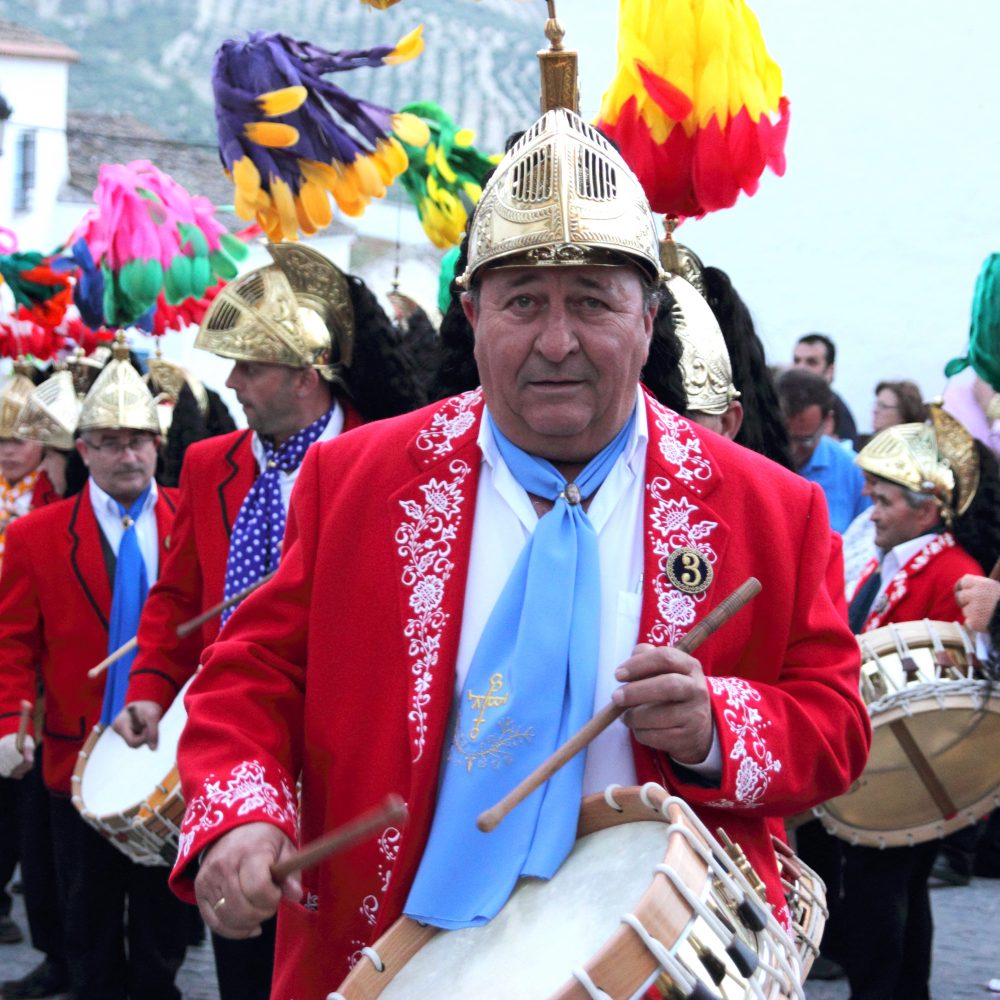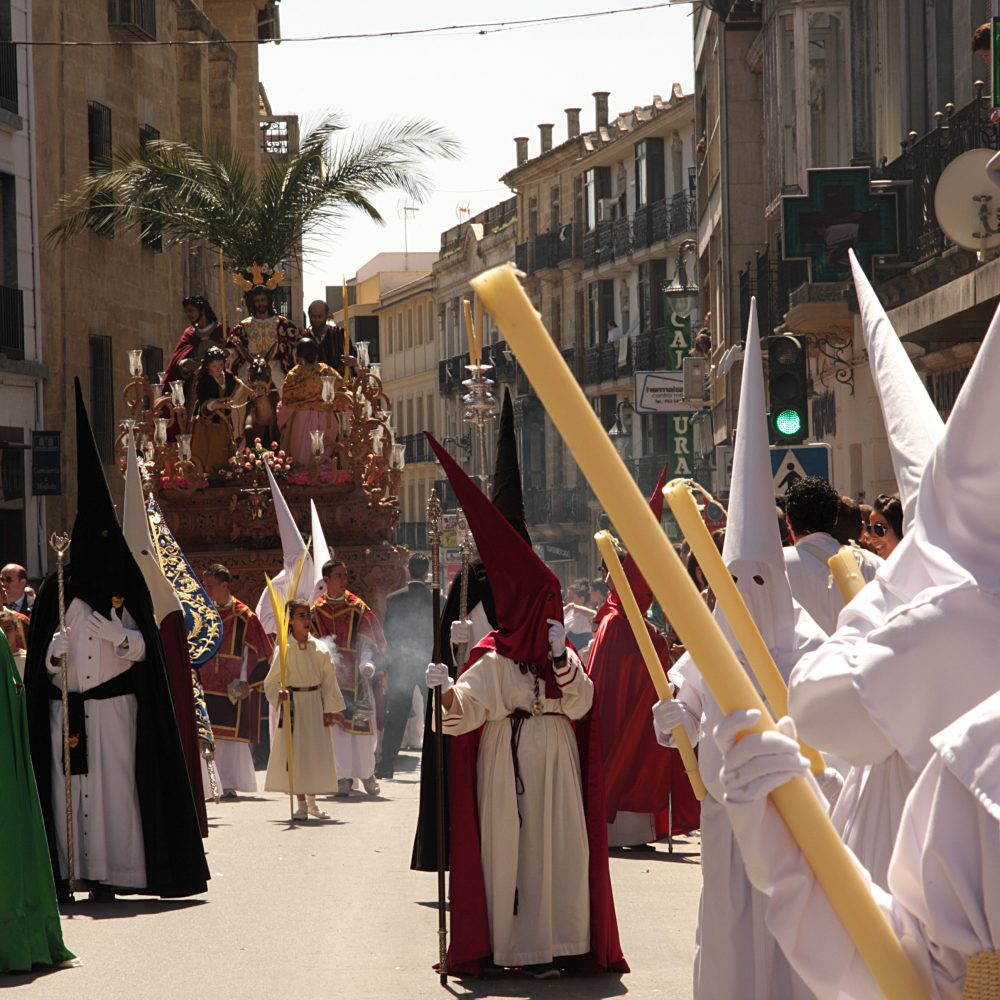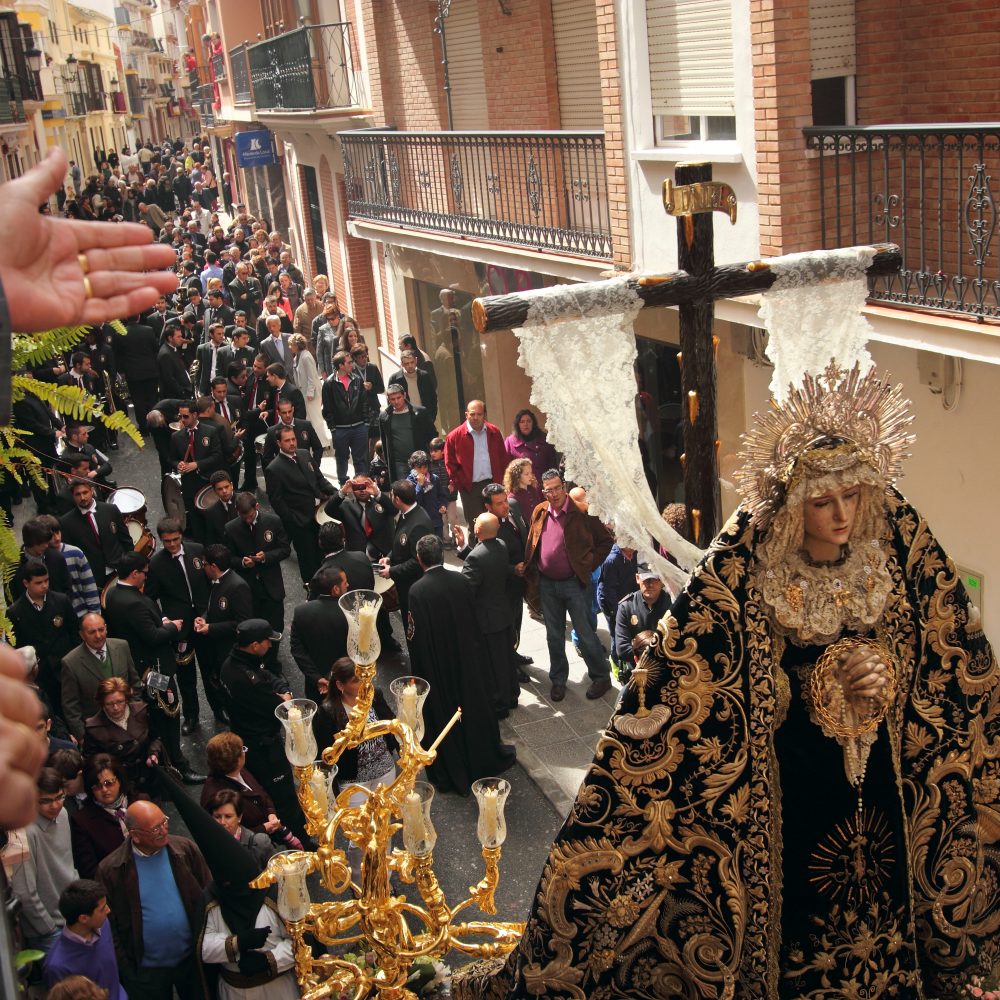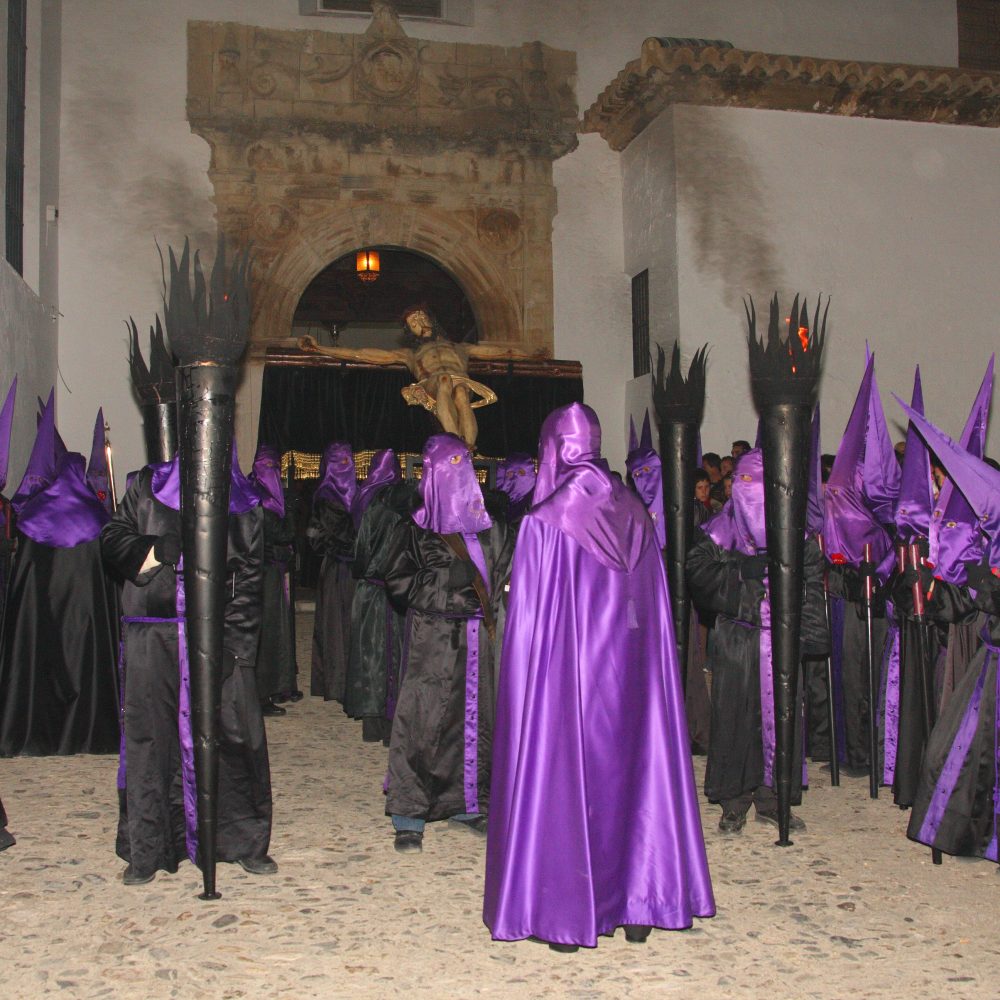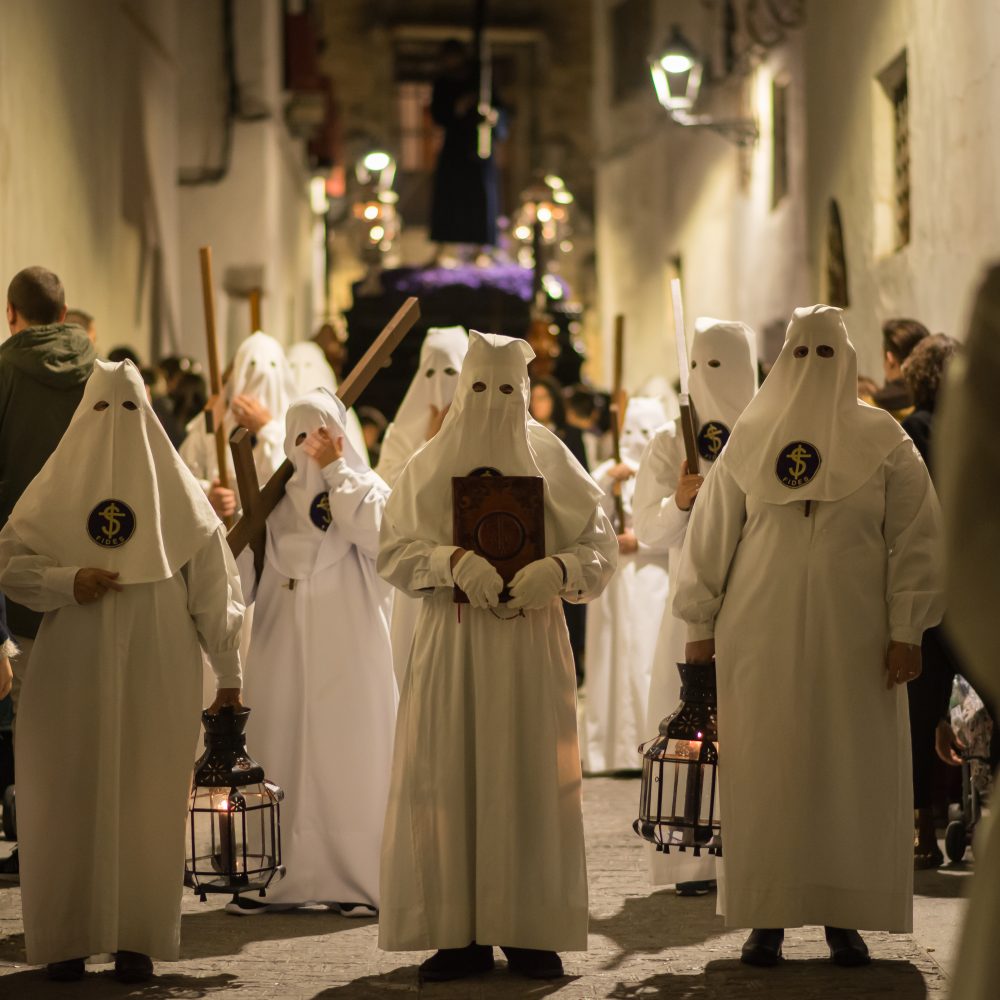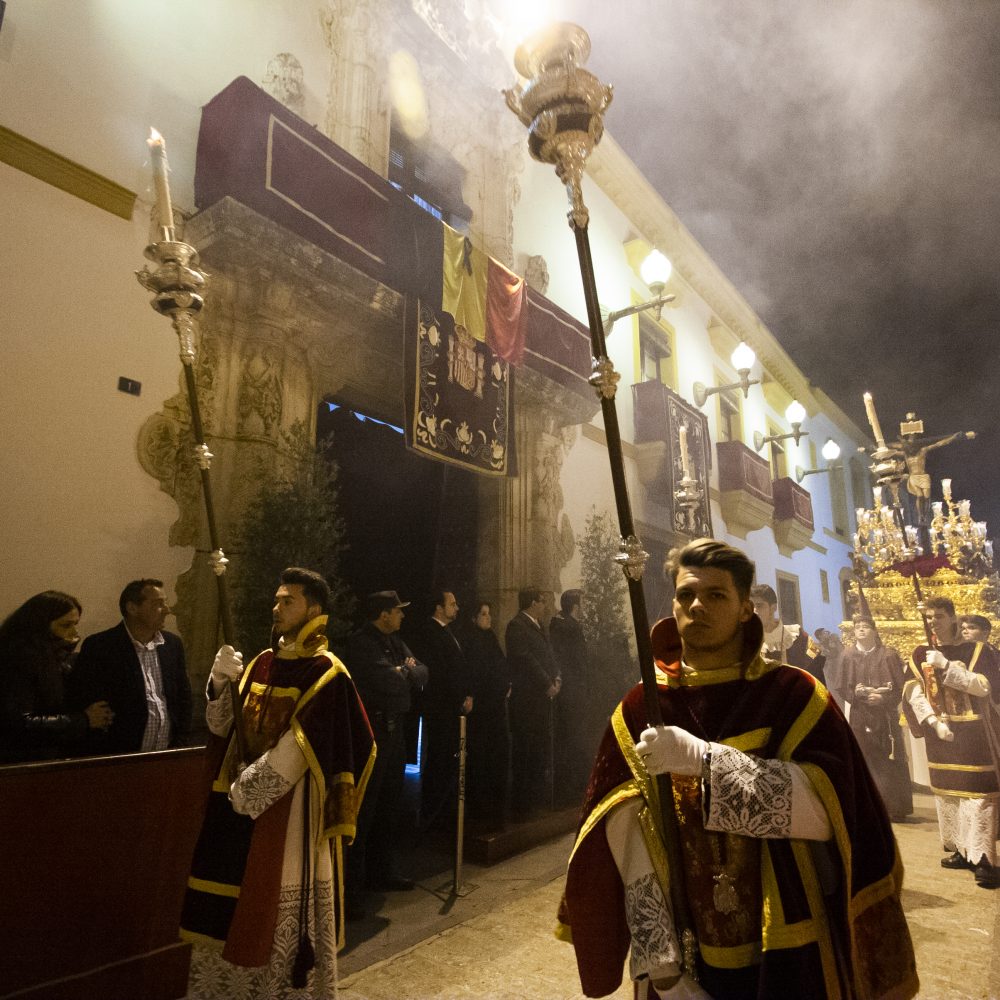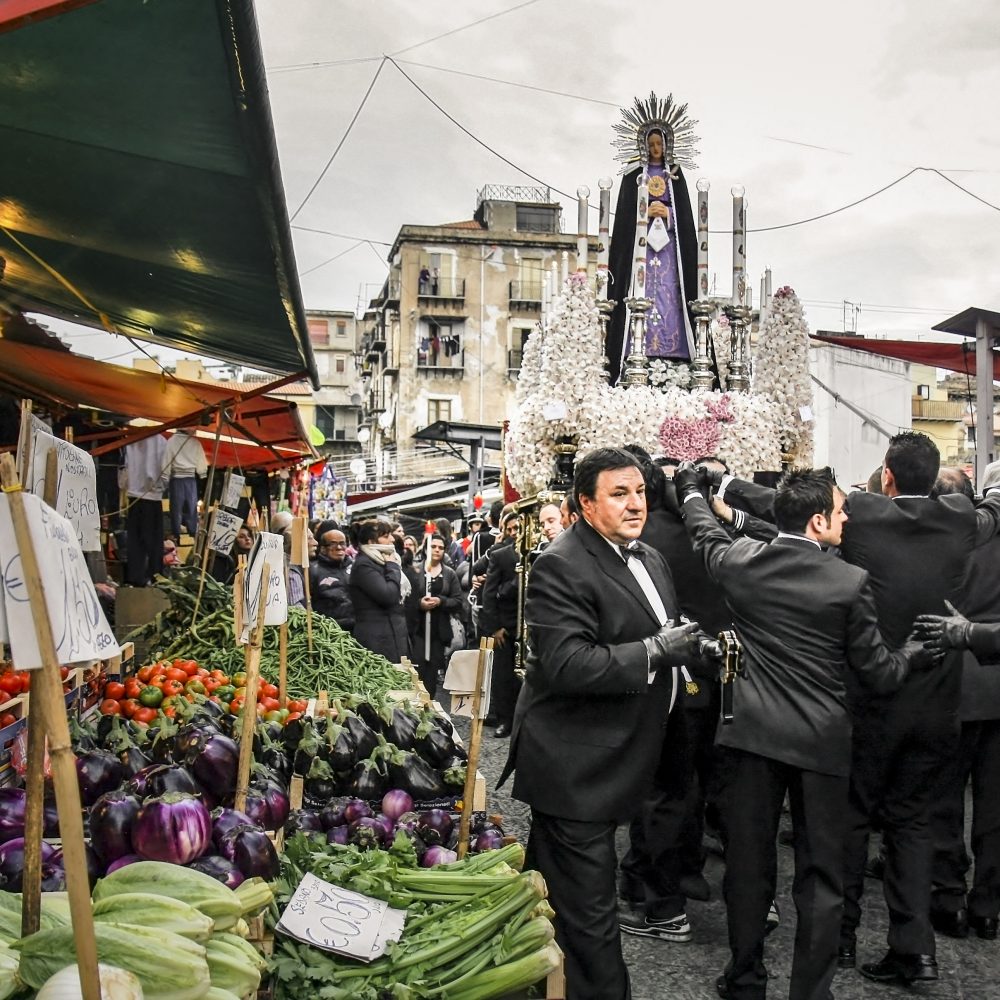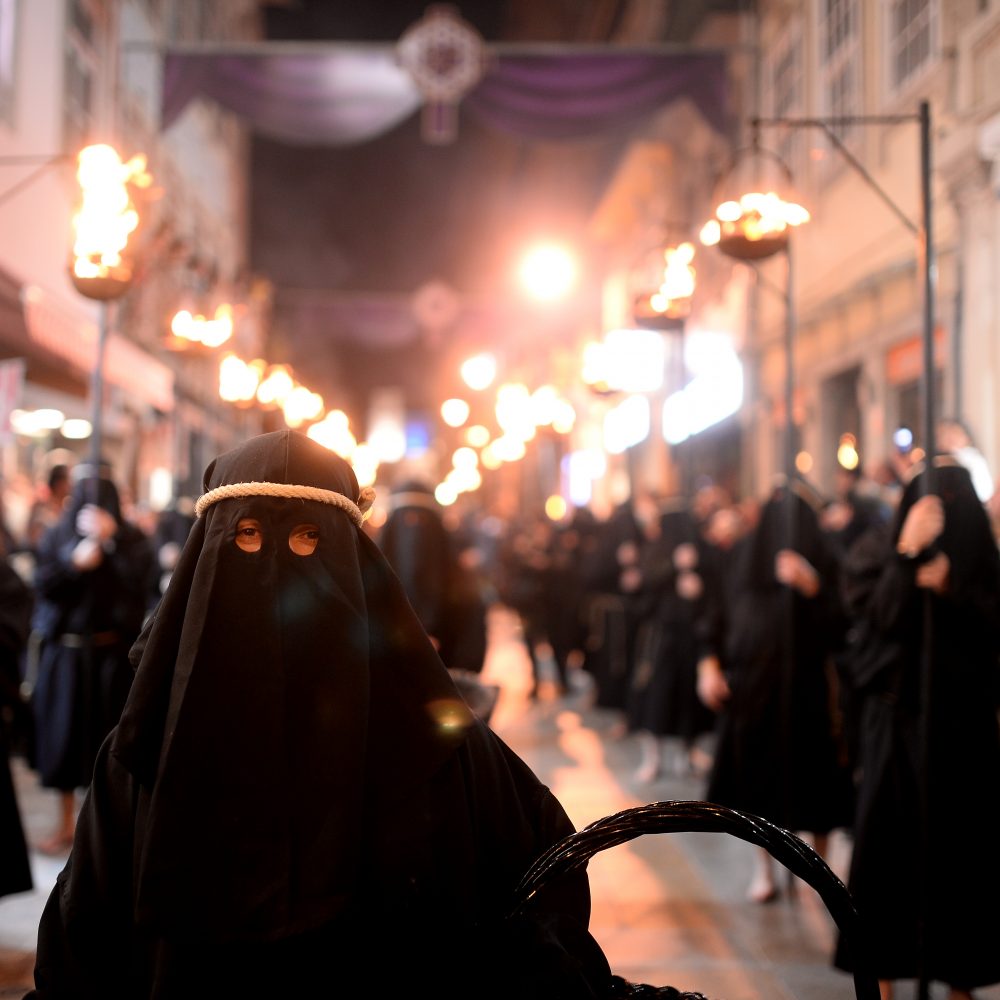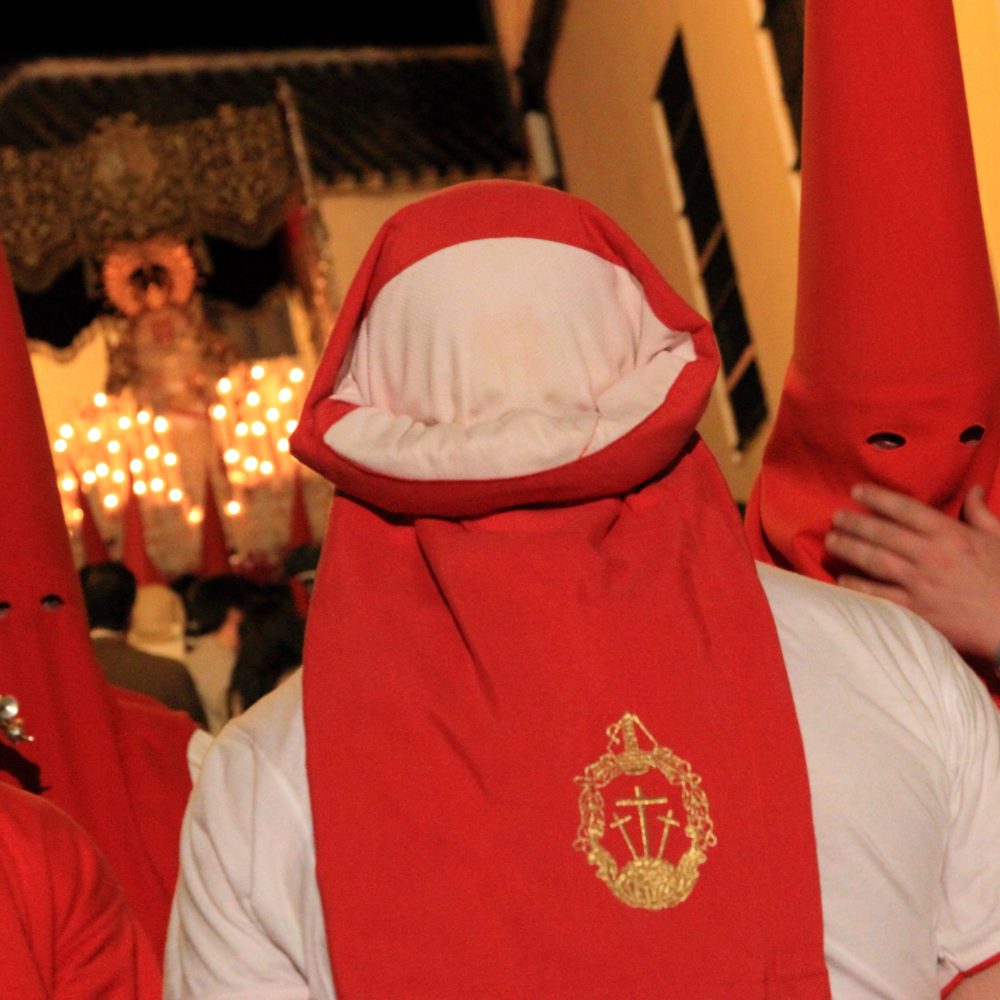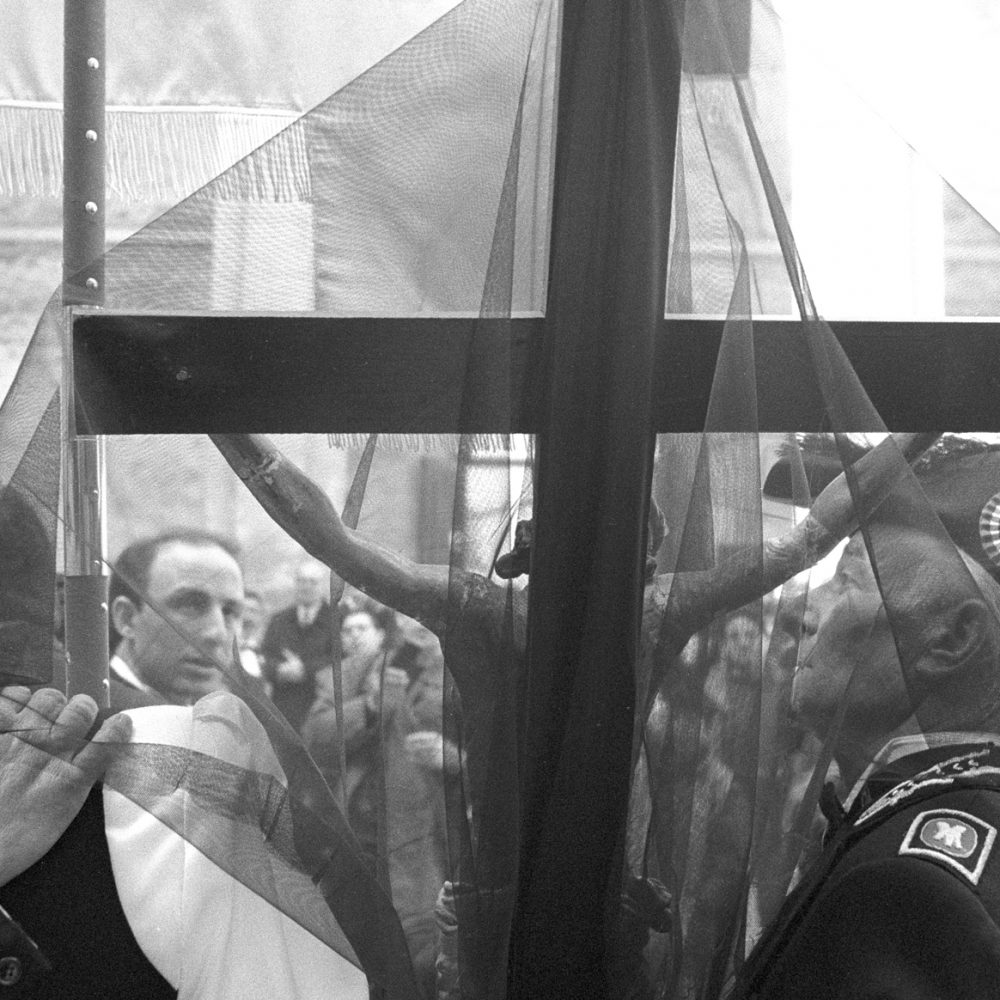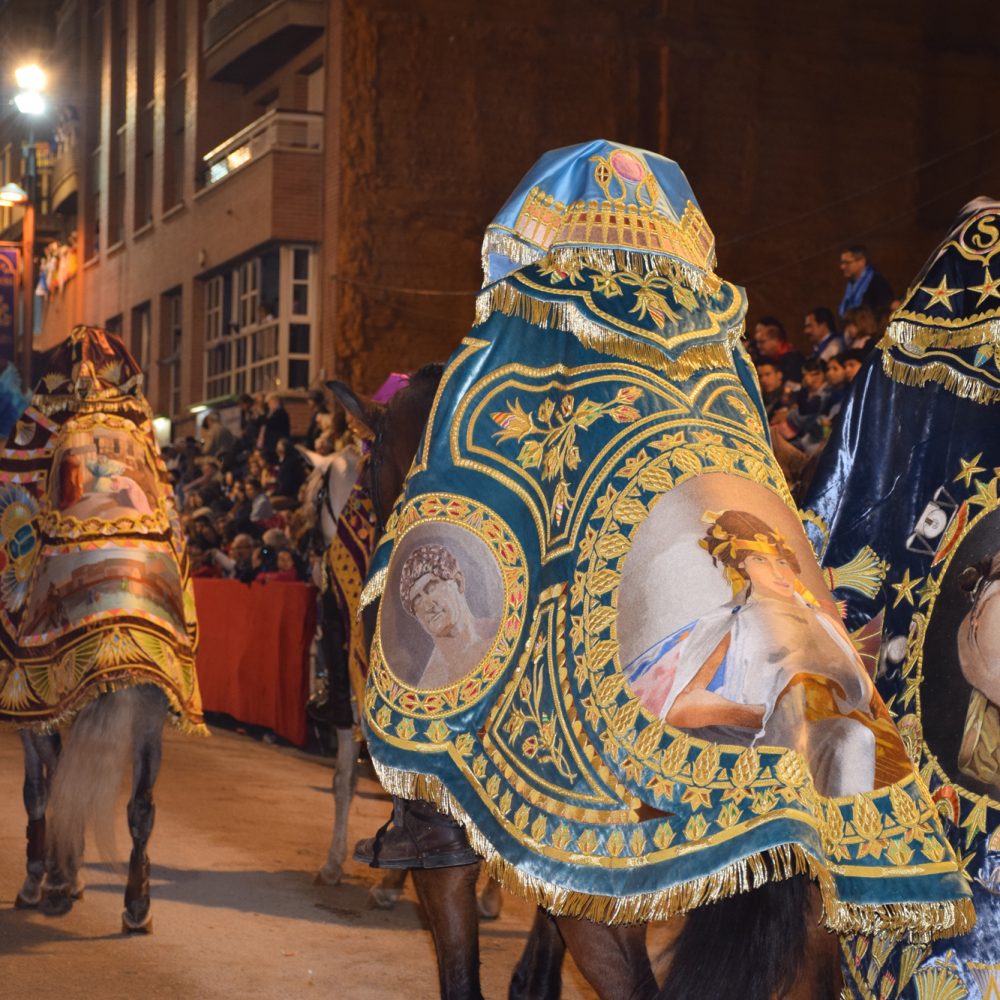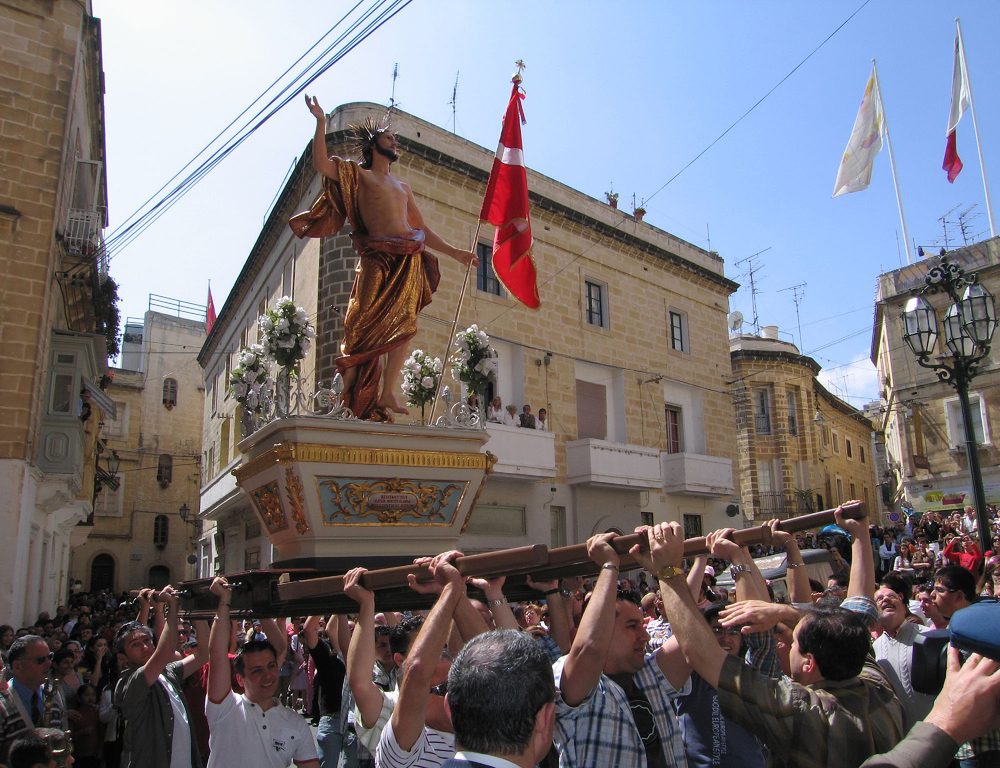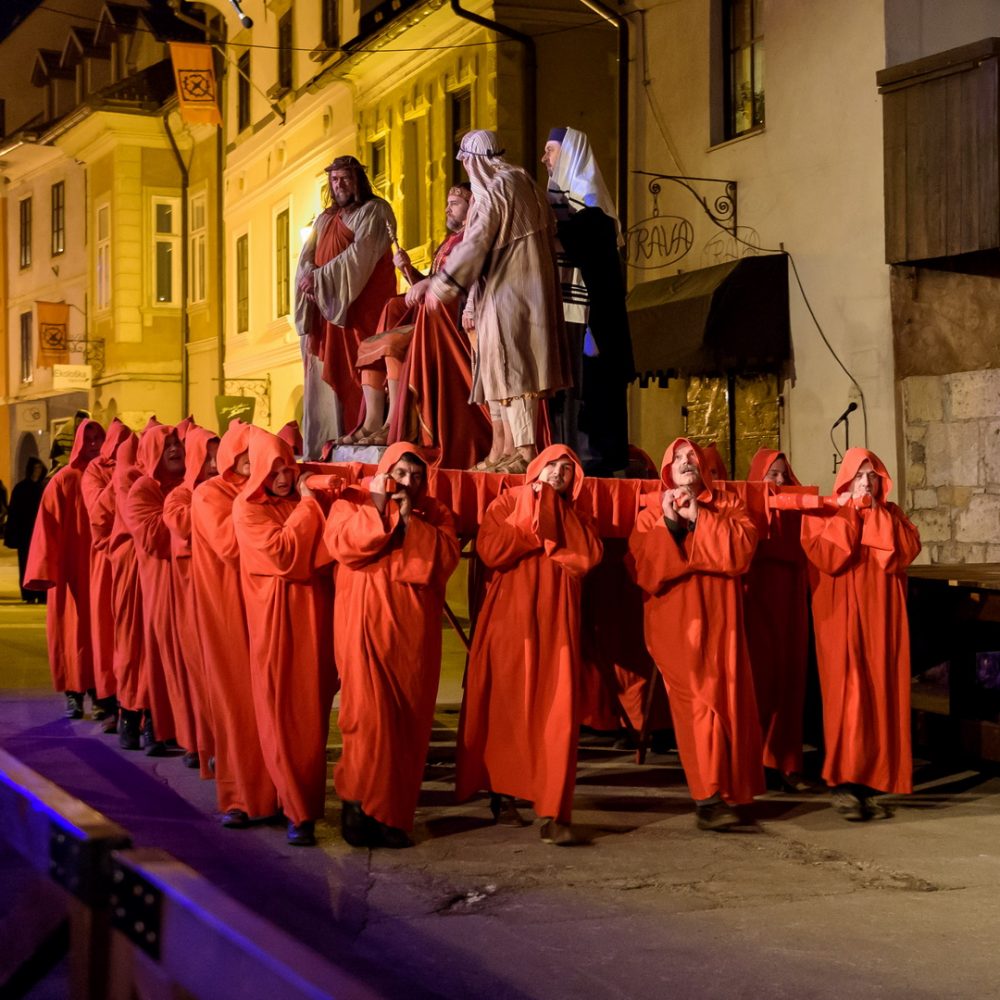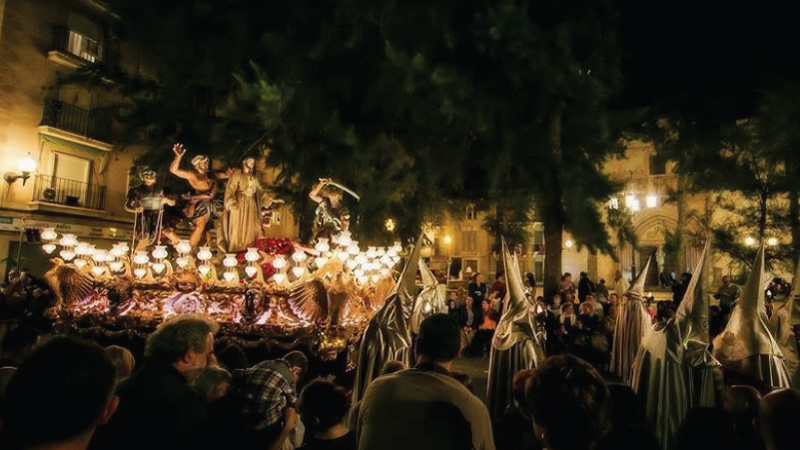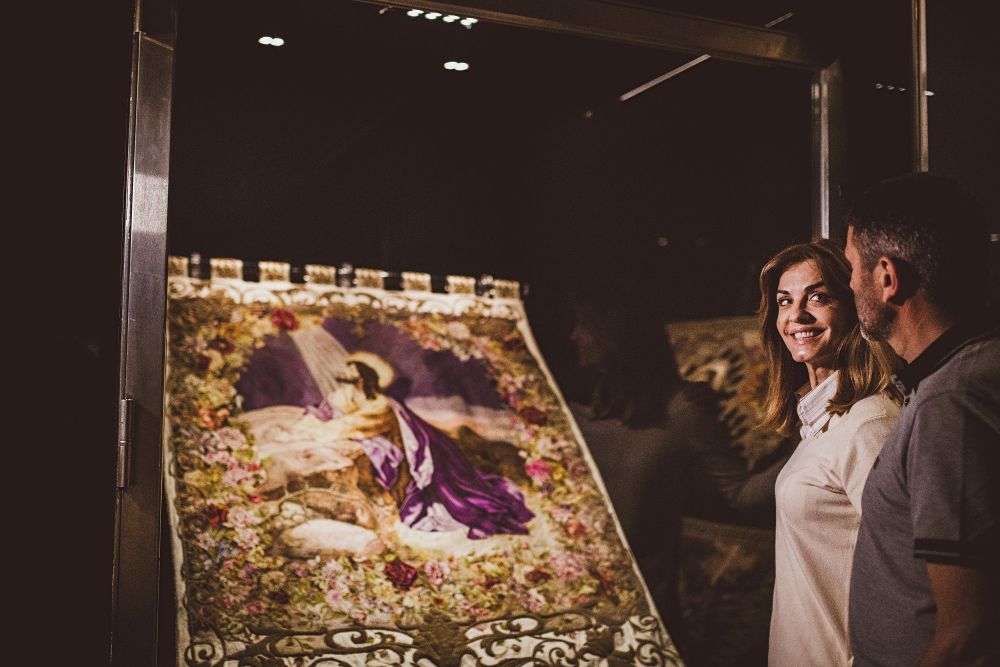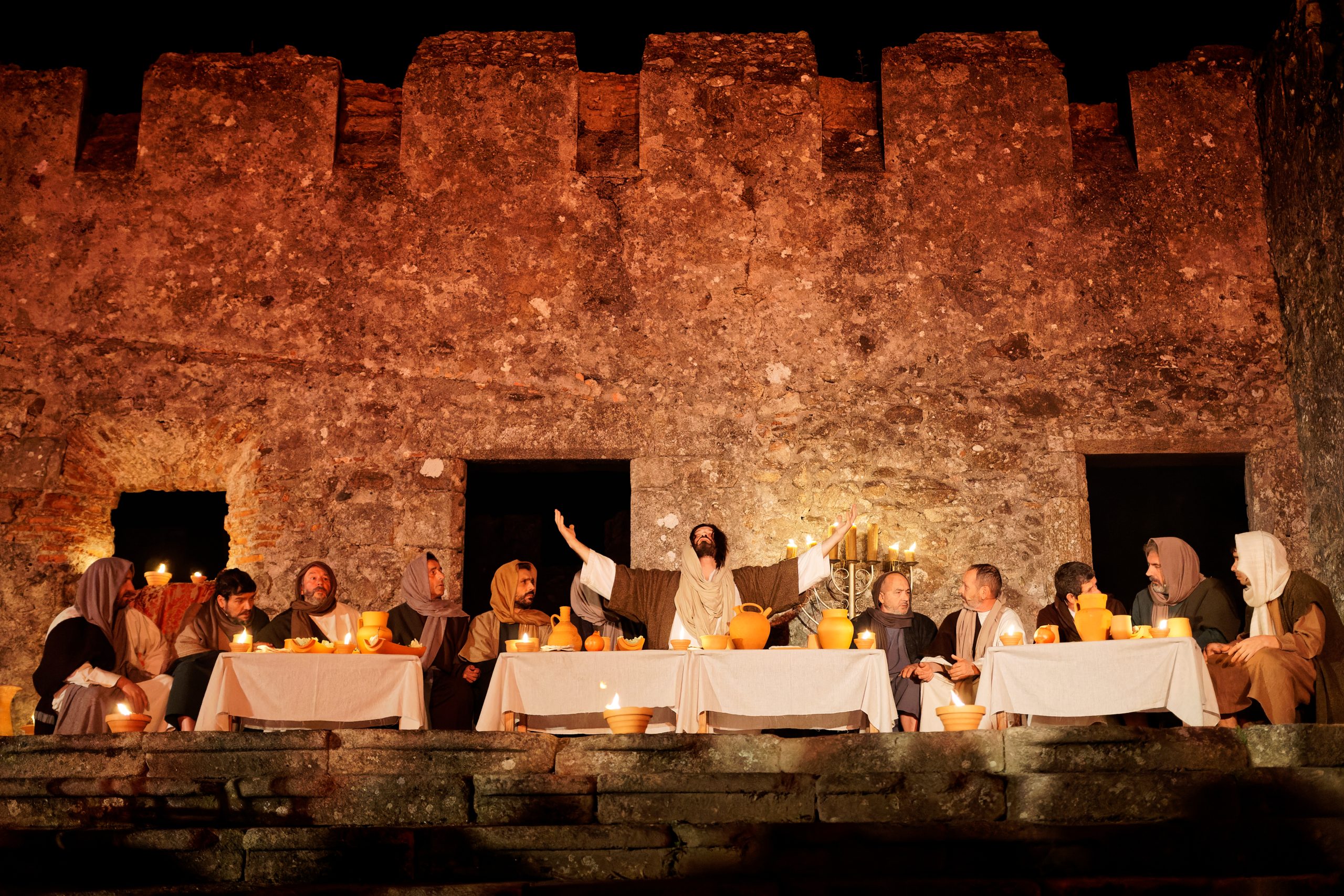
Holy Week in the European Network: living realities of a heritage rich in tradition
The European Network of Holy Week and Easter Celebrations is immensely rich in heritage and traditions. Numerous and diverse are the manifestations in which this tradition is appreciated, showing itself as a living reality present on the European continent and that combines its different and complex ways of expression and, in turn, with many points in common. Without a doubt, a material and immaterial heritage that, from this Network, we work for its protection and dissemination. Today we want to show you some small brushstrokes that reflect some of the main celebrations of Holy Week and Easter in Europe.
BRAGA (Portugal)
The city of Braga has lived the tradition of Holy Week in the community since Christianity was implanted in the fourth century. The streets are dressed in purple, decorated for the event with banners and smell of incense. The main liturgical celebrations that claim the identity of its Holy Week are held in the Cathedral of Braga. In seven churches of Braga the sepulcher of the Lord is venerated during the days of celebration of this tradition. And on Easter Sunday joy explodes! Bells can be heard ringing in the distance.
ALCALÁ LA REAL (Spain)
Holy Week in Alcalá la Real is the most important moment in the life of the city. The ceremonies carried out combine the representations or steps proclaimed in the street and the traditional processions. The representations are a fusion of two different traditions: the autos or sacramental mysteries (religious theater pieces) and the ingenios (festive religious representations of biblical passages of life, passion and death of Christ).
BAENA (Spain)
The sound of the drum of the mobs of Jews, coliblancos and colinegros, mark the future of Lent and Holy Week in Baena. Celebration that takes place between the rectitude of the parades and their particular steps or staging, evangelical gestural representations with reminiscences of the sacramental autos that, from the Baroque to the present day, have remained unchanged thanks to tradition. Each of the brotherhoods of Baena must be understood as a compendium of different brotherhoods and gangs (civic associations that integrate Jews) that come together in the same parade in order to demonstrate their devotion to the same dedication. These processions take place in chronological order during the week.
CABRA (Spain)
With its 29 brotherhoods and confraternities, centuries of tradition and art sweeping its streets, Holy Week in Cabra is a tradition that remains alive, with all its symbology, with the presence of Jews and Romans, drums and trumpets, in its ceremonies. The Cabra’s Holy Week not only stands out for its religiosity but also for the high level of heritage that its brotherhoods guard. Among the creators of devotional images are the hands of the most important masters of the Eastern and Western Andalusian schools. Bulk, dress, free-standing or ensemble works that respond to the traces of José de Mora, Pedro de Mena, Francisco Salzillo, Pablo de Rojas and even the circle of Martínez Montañés.
CARMONA (Spain)
Taking place inside its stone walls, its narrow streets and its hidden squares, Holy Week in Carmona allows an exercise of singular sobriety, devotion and beauty. The indisputable artistic interest of this emblematic event is reflected in an impressive image of the Lord of ‘Amargura’, made in 1521 by Jorge Fernández Alemán. Embroidery, sculptures, different types of fabrics, as well as pieces from the best goldsmiths enrich Carmona’s Holy Week.
ÉCIJA (Spain)
Écija preserves spectacular processions with important images of great historical-artistic relevance that have centuries of history. Heiresses of a great devotion, from Passion Saturday, with the Olive Tree Procession, and until Easter Sunday, a Parish Group and thirteen brotherhoods procession around the streets of the municipality. The Brotherhood of the Captive, with the passage of ‘La Borriquita’, which comes out on Palm Sunday in the morning, and Jesús Cautivo and the Virgin, which comes out in the afternoon, officially opens the Holy Week. Also in procession are the Cristo de la Salud, from the 16th century approximately, the Cristo de la Yedra, from 1630 and attributed to Juan de Mesa, the Cristo de la Expiración, a sculpture from the 17th century by Pedro Roldán. The Ecijano style of carrying steps stands out, which some still retain and are carried on their shoulders by men dressed in tunics and hoods (face coverings).
LORCA (Spain)
What stands out in Holy Week in Lorca is the theatricality and spectacular nature of its celebrations. The devotion, the art, the color and the music amaze all those who want to remember the Passion of Christ here. Holy Week in Lorca is also known as “white and blue” due to the rivalry between its two main brotherhoods. On Good Thursday and Good Friday, the city is a burst of colors in a baroque procession, where two Brotherhoods processions, characterized by their colors: white and blue. The great procession takes place in what is described as “The Race”. A group of people who represent Roman soldiers, Egyptian troops or characters from Greco-Roman mythology are brought together to represent scenes from the Old Testament in large chariots, impressive horses and spectacular equestrian groups.
LUCENA (Spain)
One of the most unique events in the city is its Holy Week, which in Lucena has its own unmistakable style that mixes art, aesthetics and tradition. Its greatest hallmark comes from all the singularities that make up the world of “La Santería”, a unique tradition for the way of carrying the thrones (on the shoulder, outside and with the face uncovered, to the sound of the drum and the torralbo), added to a magnificent wealth of imagery and its 17 brotherhoods, some of them with more than four centuries of history.
ORIHUELA (Spain)
Holy Week in Orihuela combines the spectacular thrones with the sound of the “twin” trumpets during the day or the Song of the Passion at night. One of the most important processions is the one that takes place on Holy Thursday at night: the Santo Cristo del Silencio procession. In it you can see two long lines of brothers, dressed in Capuchin habits, with their heads covered, walking through the crowd in the most absolute silence. The Christ of Consuelo, the work of José Puchol (1795), is another of the protagonists of Holy Week in Orihuela. As it passes, the Song of the Passion can be heard, an immaterial work that dates back to the 16th century and whose song of “hoarse angels” has been transmitted by oral tradition to the present day. Also noteworthy is the procession of the Holy Burial of Christ, on Holy Saturday, an official mourning procession in which the entire municipal government participates.
OSUNA (Spain)
The splendor of this celebration in Osuna is based on its imposing processions that run through its streets and monuments, and the historical-artistic importance of its steps and processions, surrounded by an outstanding heritage environment and that syncretizes influences from the East and West Andalusia, especially in their sizes and way of carrying the steps, creating a unique atmosphere. Another attraction of this series of events is the incalculable value of the excellent sculptures that make up its steps which were made by authors such as Juan de Mesa, Vicente de Tena or José de Mora, among others.
PRIEGO DE CÓRDOBA (Spain)
Holy Week in Priego de Córdoba is one of the most relevant manifestations of the genre in its region. The population takes to the streets to accompany their processions where steps of extraordinary sizes are carried, in a demonstration full of popular fervor and emotion. The solemnity of the different brotherhoods, which begin on Palm Sunday, contrasts sharply with the popular participation in the Good Friday ritual, when a large number of people yearn to stand next to the steps to climb to Mount Calvary where the Nazarene, will bless thousands of hornazos shown by his devotees with their hands raised. It also highlights the celebration of El Prendimiento, a sacred theater performance that represents the last supper of Jesus, the Prayer in the Garden and the Arrest.
PUENTE GENIL (Spain)
Holy Week in Puente Genil is affirmed as one of the most important and unique manifestations of popular religiosity in Andalusia due to its own identity. The «Mananta» (contraction of the words Holy Week) is a unique dimension, it seems that we are in front of a mixture of symbols, in a contradictory disorder. Therein lies its mystery and its claim. In total there are 23 brotherhood processions, which take place from Passion Saturday to Easter Sunday, accompanied by the “figures”, some 400 biblical characters from the Old and New Testaments and symbols of Christian theology. Its origin dates back to 1664.
UTRERA (Spain)
Holy Week in Utrera is one of the most important religious and festive events in the city that awakens the fervor of its inhabitants. During the seven days of Holy Week, its 13 brotherhoods walk the streets of the city with their canopies in imposing processions that arouse the fervor and devotion of the spectators and participants. All the processions go through the Plaza del Altozano where benches and chairs are placed. In the processional parades, the religious and artistic legacy of the brotherhoods is especially appreciated, some of them founded between the 16th and 18th centuries. At dawn on Good Friday you can enjoy what is known as the ‘Madrugá gypsy’, in which the gypsies of Utrera sing to their headlines: the Christ of the Good Death and the Virgin of Hope.
VIVEIRO (Spain)
Viveiro has in the Holy Week celebrations its golden moment of the calendar. It is the set of most important Easter events in Galicia. Numerous steps, some of them articulated and of great artistic interest, lead the solemn processions, in which brotherhoods and confraternities fill the streets of this Galician town with religiosity and an intimate atmosphere. Eucharist, via crucis or tamboradas, among other manifestations, precede the big days. The most outstanding acts begin on Holy Thursday, with the procession of the Last Supper.
CALTANISSETTA (Italy)
Holy Week in Caltanissetta is considered one of the most important in Sicily. It begins on Palm Sunday with the representation of Jesus of Nazareth in a boat-shaped parade, covered with flowers and led through the streets of the historic center of Caltanissetta. Noteworthy is the procession on Wednesday, when the Real Maestranza gives way to the official celebrations of Nissena Holy Week: the captain of the Maestranza stands at the head of the procession carrying a Crucifix with a black veil. Both the captain and the other components wear mourning: tie, socks and black gloves. The steps of La Varicedde, Le Vare, Il Cristo Nero and La Resurrezione stand out.
PALERMO (Italy)
Also in the Sicilian capital the rites of Holy Week are a typical popular religious event. This set of rituals (also known as Vare) originated in the history of Spanish Sicily 1516-1713 when the entire island was under the rule of the Crown of Aragon united with the Kingdom of Naples. The influence of the intense Castilian experience of the Holy Week ceremonies influenced not only the figurines used, such as images, canopies and accessories, but also the way in which the population experienced them. In total there are 38 processions, between large and small, that run through the streets of Palermo throughout Holy Week.
BIRGU (Malta)
Holy Week is commemorated with great zeal in Birgu. Lent is marked by weekly pious manifestations that intensify during Holy Week when two solemn processions with life-size statues take place. At present, the cycle of the eight statuary groups is preserved here, adorned with velvets and fine silks, including halos and other silver objects. These exhibits include: the five sorrowful mysteries of the rosary, the Veronica mentioned in the stations of the Via Crucis (also known as the Way of the Cross), the Monument of the Dead Christ in an Ornate Sepulchre, and Our Lady of Sorrows.
SKOFJA LOKA (Slovenia)
“Škofja Loka Passion Play” is a theatrical piece that takes place in the form of a procession in the streets of the city center during Lent and Easter. With more than 900 local artists, this representation is based on a manuscript by a Capuchin monk, where 20 scenes from the Stations of the Cross and others from the Old and New Testaments are described. Performed in the dialect of the time it was written, the piece takes place in different locations around the city. In addition to the actors, another 400 volunteers from the community participate in the production of the piece. Given the complexity that its representation demands, it is carried out only every six years.

